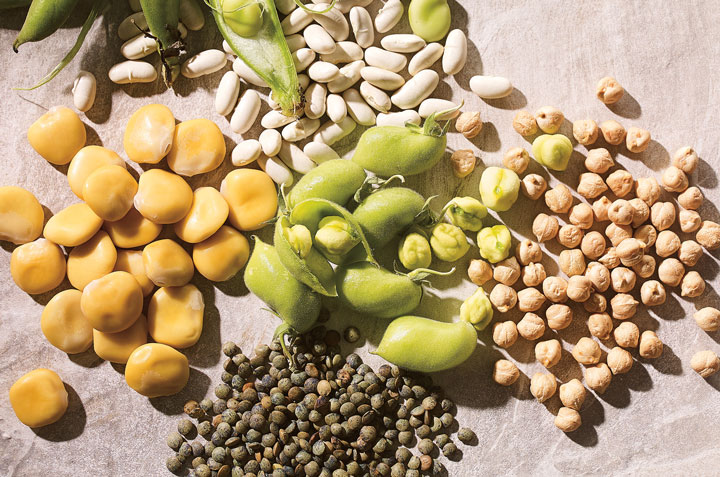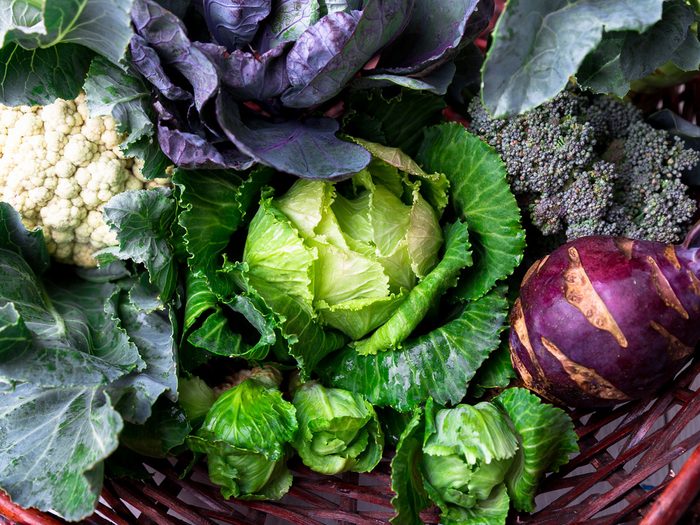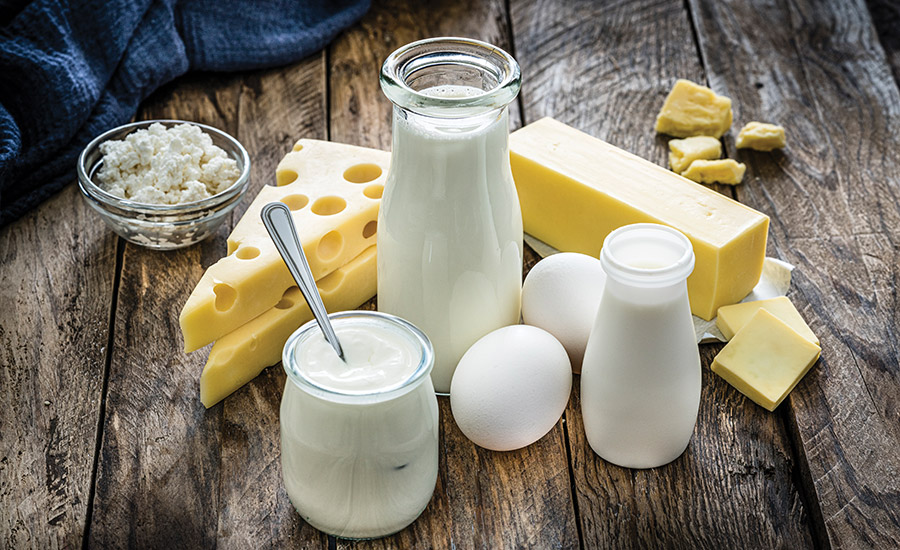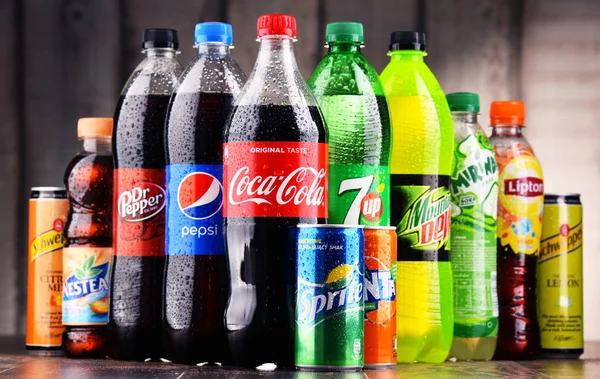Feeling gassy is a normal part of digestion, and even the most nutrient-rich foods contribute to breaking wind. If you’re frequently farting and wondering why, read on to find out which five foods could be digestive offenders.
Fourteen times a day—that’s how often most people pass gas. Everyone experiences gas, and though it’s mostly harmless, loud sounds and lingering smells can be embarrassing. The toots may result from swallowing too much air from drinking carbonated drinks, chewing gum or even drinking too fast, according to the National Institute of Diabetes and Digestive and Kidney Diseases. That’s proof that gas and bloating can be totally normal. But more often than not, certain foods and drinks can stimulate those familiar tummy gurgles.
Pictured Recipe: One-Pot Lentil & Vegetable Soup with Parmesan
Plenty of foods and beverages provide macronutrients, vitamins, minerals and antioxidants essential for good health. Though they play significant roles in our bodies, some nutrients may be more challenging to digest, causing stomach upset and gas. If gas has you in pain or sneaking off to the nearest corner, it may help to learn the culprit of your gas troubles. By tweaking your cooking habits or swapping to less gas-prone foods, you may be on your way to fewer bottom burps.
Here are five foods that may be making you gassy.
1. Legumes

Beans and lentils are heralded for their fiber, a key nutrient in healthy digestion and constipation relief. But for some people, legumes such as black beans, lentils and chickpeas may deliver more than fiber, but pent-up gas too. Legumes are rich in oligosaccharides, a carbohydrate that the small intestine can’t digest.
More specifically, legumes are abundant in raffinose, a type of oligosaccharide. Raffinose must be broken down through fermentation by the bacteria in the colon. According to a 2022 article published in Frontiers in Plant Science, this fermentation produces hydrogen, carbon dioxide and methane—large components of gas and flatulence. Many people keep their distance from the magical fruit, but the reality is, eating more may help reduce the toots. You can also make beans less gas-provoking by soaking dry beans overnight or rinsing canned beans well before using.
2. Cruciferous Vegetables

Cruciferous vegetables are a class of plants belonging to the Brassica genus. Brussels sprouts, broccoli, cauliflower, cabbage and kale are a few members of this family with a gassy reputation. Many cruciferous veggies are high in FODMAPs, which stands for fermentable oligosaccharides, disaccharides, monosaccharides and polyols. FODMAPs are a group of small nondigestible carbohydrates that trigger abdominal symptoms in many people, especially those with irritable bowel syndrome (IBS). Like beans, some cruciferous veggies contain raffinose and fructans, two types of oligosaccharides or FODMAPs. Doctors and dietitians broadly encourage eating more cruciferous veggies for their health benefits, so before shying away from the group, you might cook them in a few different ways first. Cooking cruciferous veggies before eating could help them become more absorbable, leading to fewer farts. Not feeling it? You can switch to other nutrient-dense vegetables that are lower in FODMAPs and less likely to stimulate gas. Bok choy, eggplant, lettuce, cucumbers, zucchini and bell peppers are a few examples.
3. Dairy

It’s not uncommon for dairy foods like cow’s milk and ice cream to send your stomach rumbling with bubble guts. Milk and ice cream are high in natural milk sugar, known as lactose. For your body to digest lactose, it needs a special enzyme called lactase to break it down. Lactase levels are low in people with lactose intolerance or sensitivity, leading to diarrhea, stomach cramps and gas symptoms after eating dairy. You aren’t alone if you get gassy after eating or drinking dairy products. About 65% of the world is lactose intolerant, plus lactase enzymes decrease as we age. Switching to lactose-free dairy products or dairy-free products fortified with nutrients such as calcium and vitamins D and B12 may help do away with gas if you’re sensitive to lactose.
4. Sugar-Free Chewing Gum

Many of us opt for a stick of chewing gum to freshen breath, reduce stress or help keep from smoking. Whether minty or fruity, many brands sweeten their chewing gum products with a group of sugar alcohols called polyols. Two types of polyols—xylitol and sorbitol—may lead to intestinal discomfort due to increased gas production during fermentation by gut bacteria. A small 2022 study published in the Journal of Nursing Research found that xylitol chewing gum caused gas to occur significantly more quickly in patients after surgery than in non-gum chewing patients after surgery. If chewing gum is linked to your gas, stopping altogether may not be worth it to you. A more realistic option may be to switch to gum sweetened with erythritol, as it may be better absorbed (90%) and may lead to less gas. Remember that chewing gum draws more air into the digestive tract, which may make farts more frequent.
5. Carbonated Beverages

Fizzy drinks may taste good, contain caffeine and help wash down a good meal; however, they may contribute to our gassy woes. Carbonated sodas, sparkling water or bubbly energy drinks cause you to swallow more air, especially when using a straw. Everyone has different food and beverage triggers when it comes to breaking wind, and you may find that fizzy beverages don’t cause gas for you. However, if you suspect carbonated beverages give you gas, it can help cut back on your intake and trade your drink for more regular water. Jazz up plain water with rosemary, thyme, citrus fruit and cucumber slices.
The Bottom Line
While gas happens to everyone, it can be painful, embarrassing and downright annoying. But, the truth is, gas is a normal part of life. Swallowing air and eating certain foods can be why you’re so gassy. Foods triggering flatulence will vary from person to person, but know that legumes, cruciferous vegetables, dairy, chewing gum and carbonated beverages are typical offenders. A hasty remedy for gassiness is simply adjusting your eating habits. But, if your gas persists, it may be time to talk to your doctor or dietitian to find some relief.
Source: https://www.eatingwell.com








